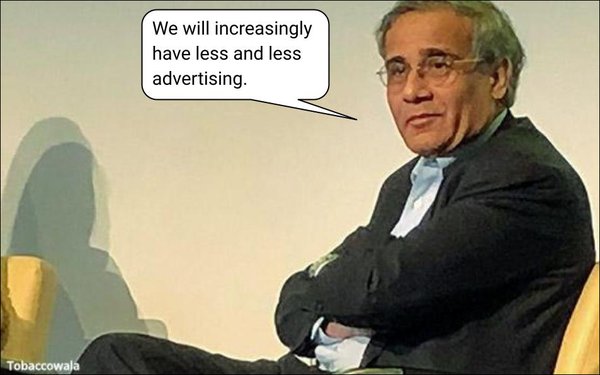
“It’s tough to make
predictions, especially about the future.” -- Yogi Berra
When I heard former long-time Publicis visionary and de facto ad industry guru Rishad Tobaccowala make
one of his boldest predictions five years ago -- that the ability of advertisers to reach consumers with their ads would decline by 30% or more by 2023 -- I made an entry in my Google calendar to
check back five years later.
“We will increasingly have less and less advertising,” Tobaccowala said in February 2018 during a keynote conversation at CIMM’s
(Coalition for Innovative Media Measurement) Cross-Platform Media Measurement & Data Summit in New York City.
He went on to predict that the supply of consumer ad exposure could
decline “30% or more” in the next five years as consumers increasingly bypassed ad-supported media options in favor of subscription-based services such as Netflix.
advertisement
advertisement
(During the session, Tobaccowala also predicted Netflix would never adopt an advertising model, which it actually did five years after his prediction.)
So what actually
happened to the supply of consumer time spent with ad-supported media over that five-year period? I checked, utilizing media industry economist PQ Media’s historical database -- and guess what,
it has increased, not decreased, over the five-year period. And it’s still growing -- at least for now.
In the U.S., the supply of consumer minutes spent with ad-supported
media actually increased 18% between 2018 and 2023. Worldwide, it rose just under 1%.
Looking forward, PQ President and CEO Patrick Quinn forecasts consumer time spent with
ad-supported media will continue to expand until 2024 in the U.S. and until 2025, at which point it will begin to dip.
Five years after making his bold prediction, Tobaccowala no
longer considers himself part of the ad business, and has moved on to a book and newsletter publishing, and public-speaking career.
He published his first book, “Restoring the Soul of Business,” and already has an advance from McGraw-Hill to publish a second one. And while he didn’t tell me what that
one is about, I’m sure it will be as well-read and influential as his first one, because Tobaccowala is a gifted speaker and writer and knows how to put things in perspective, even if the future
doesn’t always live up to his predictions.
About that, here’s what he had to say about going out on a limb like that five years ago:
“I believe
the point I was making were the following and maybe you can see if the data today supports it:
“a) It would be harder to reach people using television as 1) people left linear
for streaming; 2) streaming would have far fewer commercial breaks and;
“b) As a result advertising on video and in good environments would be far more expensive.”
Tobaccowala also qualified his earlier remarks noting, in retrospect, that “it was not a broad statement on all of advertising and in reality now that everything from email to
Substack are being monetized.”
Ironically, he concluded by noting that his own Substack newsletter, “which is read by 25,000
folks, including hundreds of CEOs” is not monetized. Which I think means that it’s really just a form of advertising for promoting Tobaccowala’s public speaking gigs and books,
albeit not a form of paid advertising.
So in a way, a lot of these stats come down to how you define what advertising is, pre- or post- any predictions you want to make about its
future.
Or, as Tobaccowala notes in his most recent newsletter posting ("The Futures Does Not Fit In The Containers Of The Past"), the future
is also "elastic."
Apparently, so is the past.
And that makes me wonder what Yogi would say?